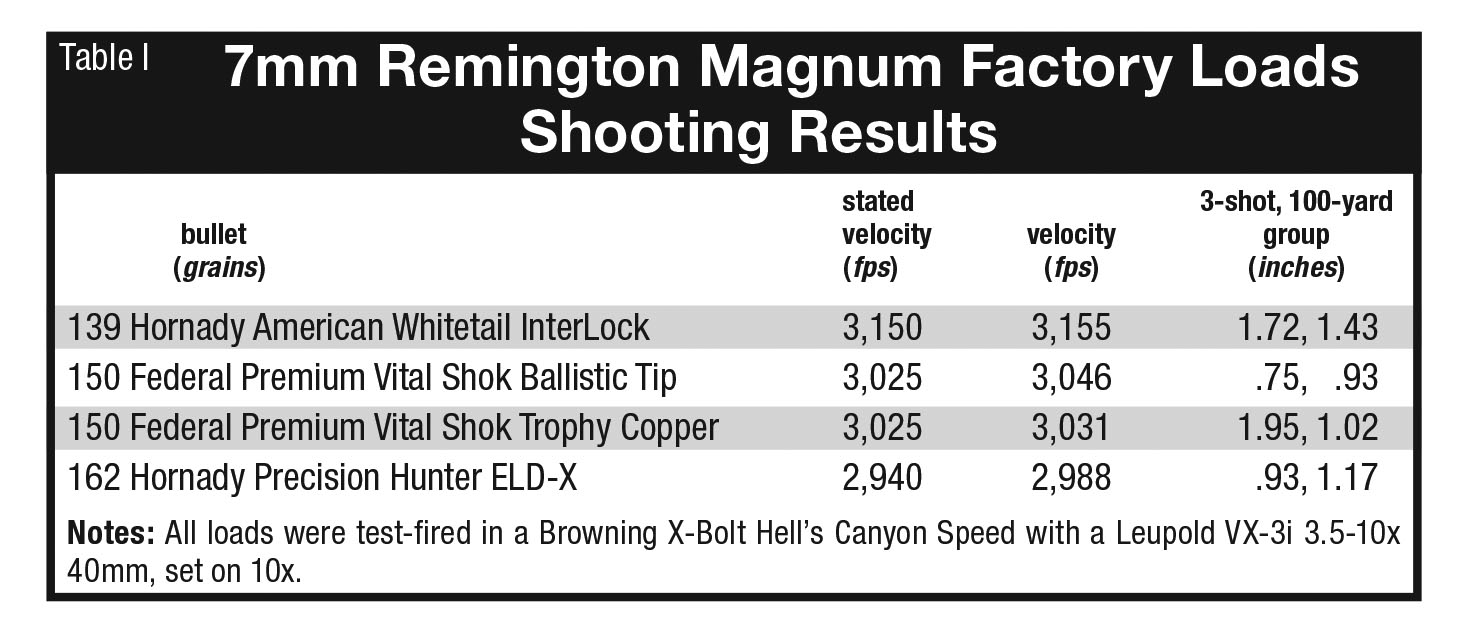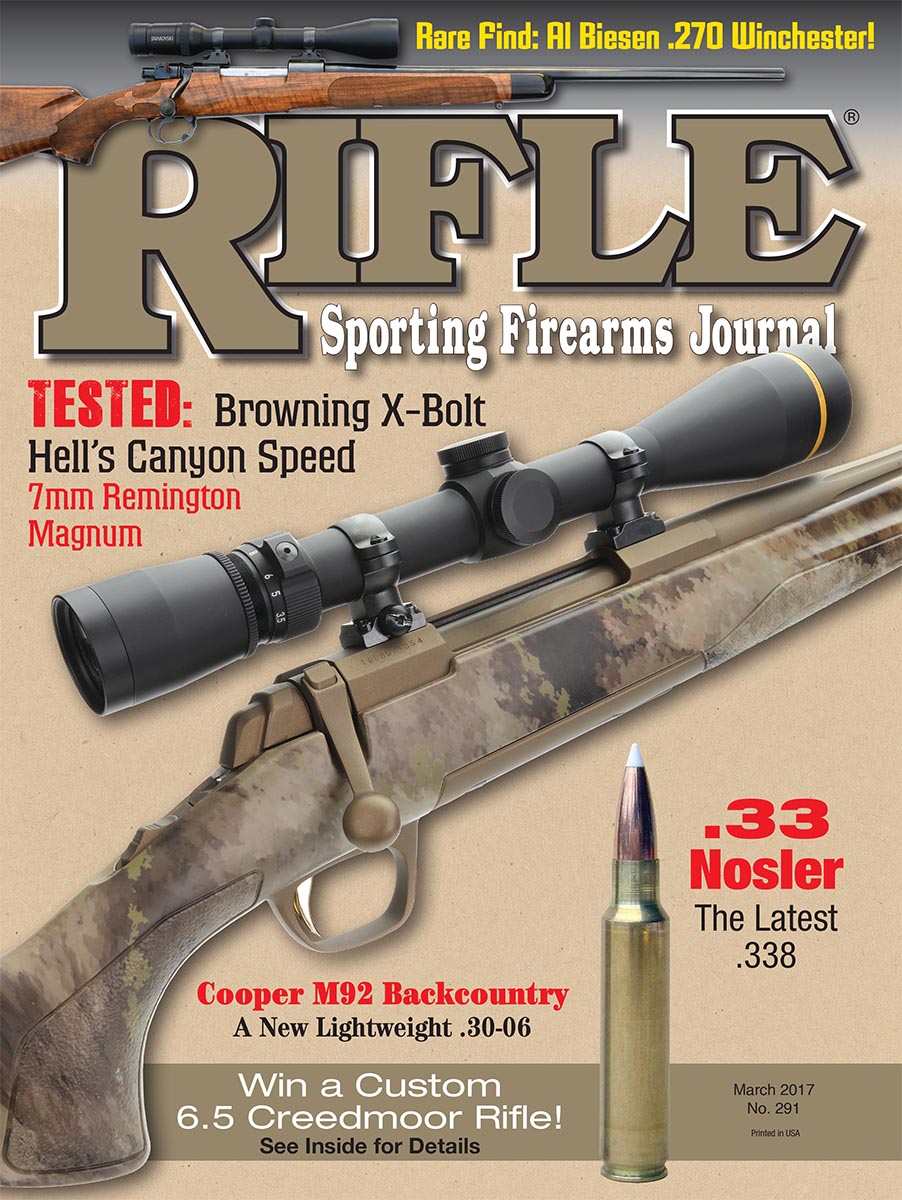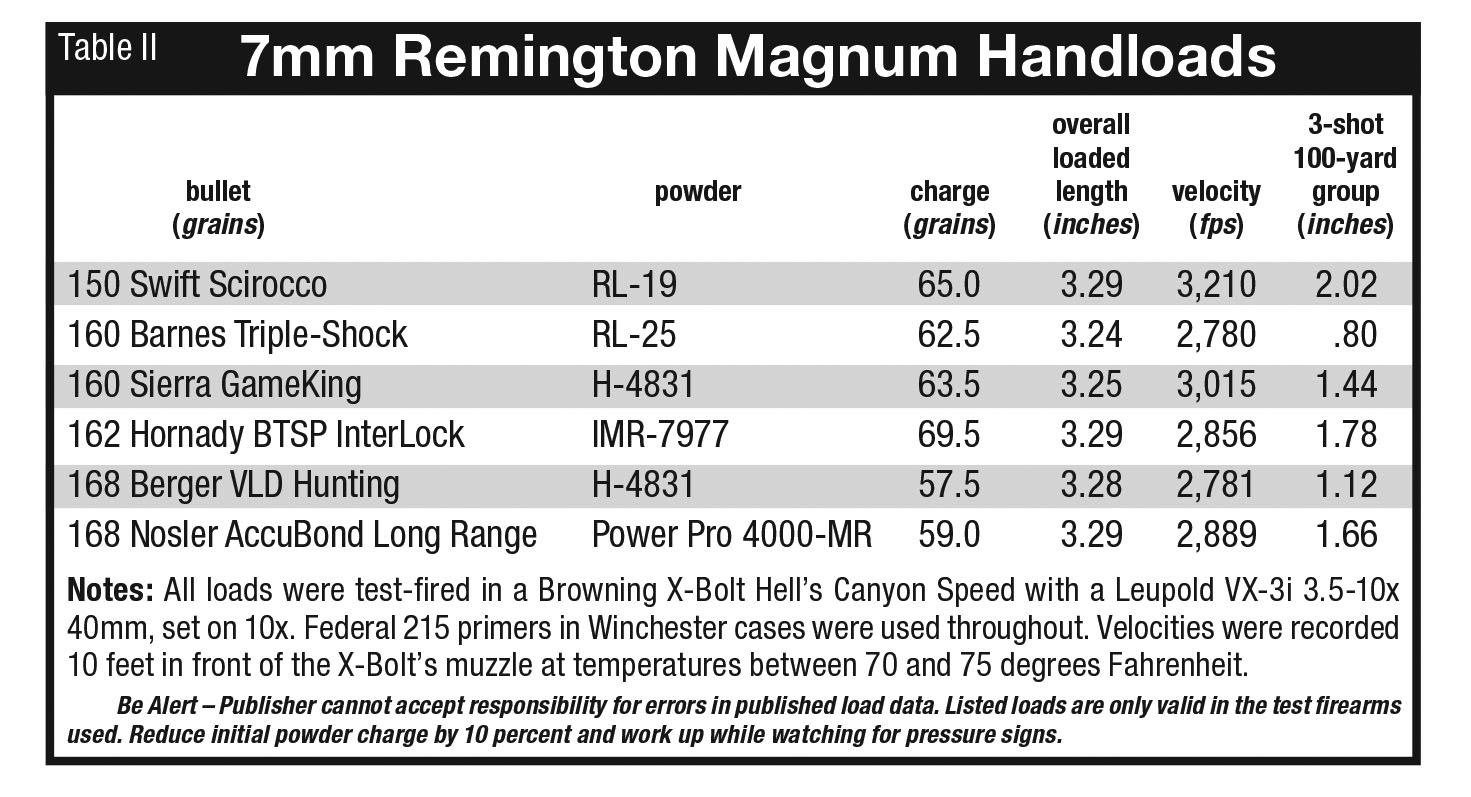Browning X-Bolt Hell's Canyon Speed
Testing a 7mm Remington Magnum in the Elk Woods
feature By: John Haviland | March, 17

Since Browning introduced its X-Bolt in 2008, the bolt action has become the company’s flagship rifle with 29 current variations listed in its catalog. The Hell’s Canyon Speed is one of the newest X-Bolt rifles and was named after Hell’s Canyon on the border of eastern Oregon and western Idaho to imply rugged and tough hunting conditions and play off its apparel line of the same name. The Speed is a pure hunting rifle chambered in 11 cartridges from .243 Winchester and 6.5 Creedmoor to the .26 Nosler and .300 Winchester Magnum.
The Speed I’ve been shooting is a 7mm Remington Magnum. While shooting a variety of factory and handloaded 7mm magnum cartridges through the rifle, the Speed shot fairly well from a bench at targets at 100 yards. In fact, two Hornady and two Federal factory cartridges shot tighter groups than four of my five handloaded cartridges. I also shot the rifle extensively from field positions to practice for an elk hunt. The Speed showed it was very accurate and had features to help a shooter take advantage of that accuracy.
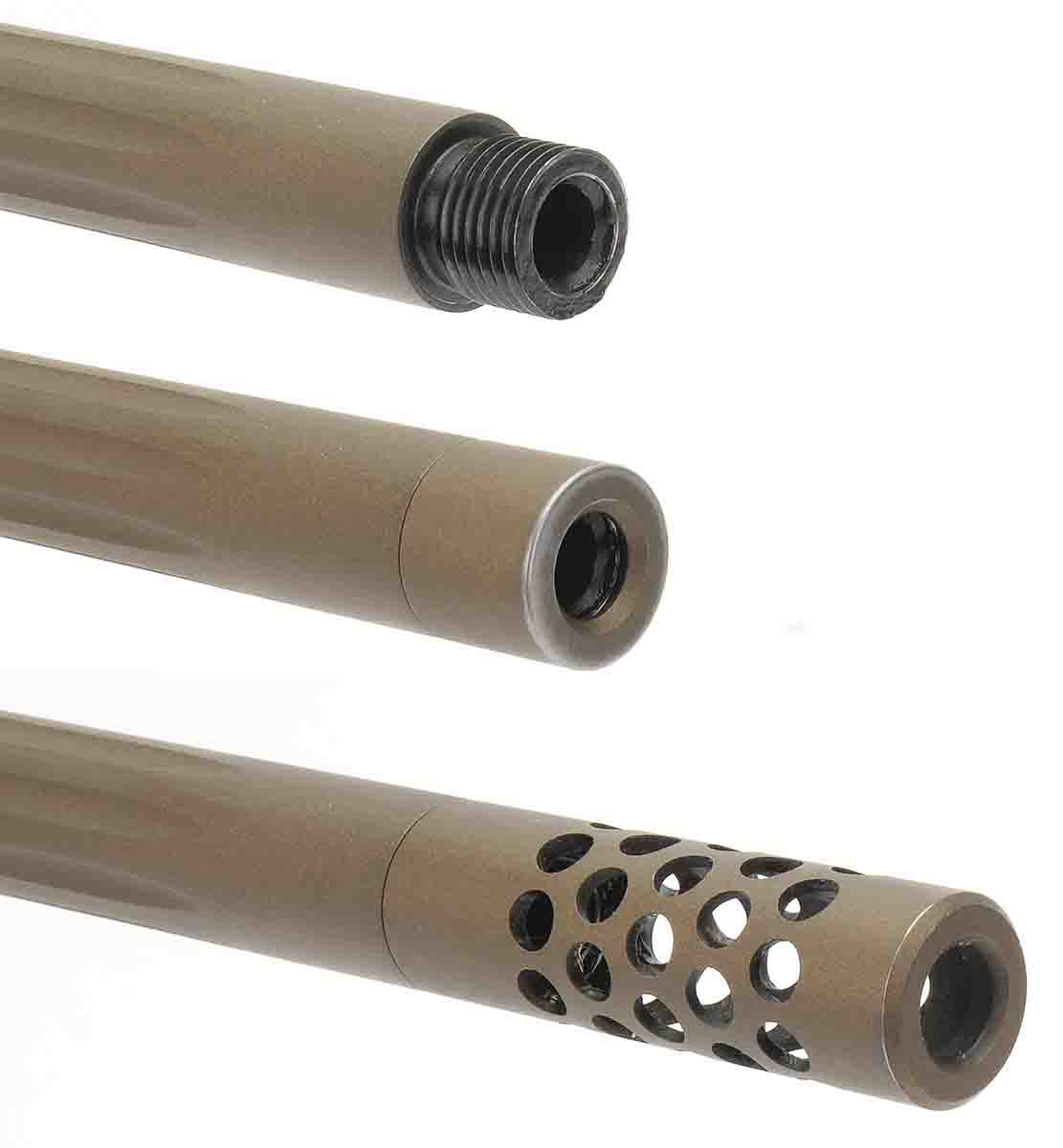
Encroaching years have made me review every pound of gear I pack up an elk mountain. My rifle is the first item up for assessment. The Speed weighed 6 pounds, 13 ounces as it came from the box. I added a Leupold VX-3i 3.5-10x 40mm scope in Leupold steel standard bases and rings. The whole outfit weighed 8.5 pounds. It would be nice if a horse would carry that weight up a mountain, but my hunt would be on foot, and that is a bearable weight for an elk rifle chambered in a magnum cartridge.
The Speed’s fluted 26-inch barrel is of a “heavy sporter” contour, according to Browning. That stretch of barrel gives the rifle a long length of 46.75 inches. Add its muzzle brake and the rifle is 4 feet long with a barrel nearly 28 inches long sticking up like an antenna to snag every overhanging branch. If going to sit in a stand while hunting, I might leave the brake on the barrel and keep ear protection close at hand, but before hiking through lodgepole pine thickets, I would replace it with the thread-protector cap.
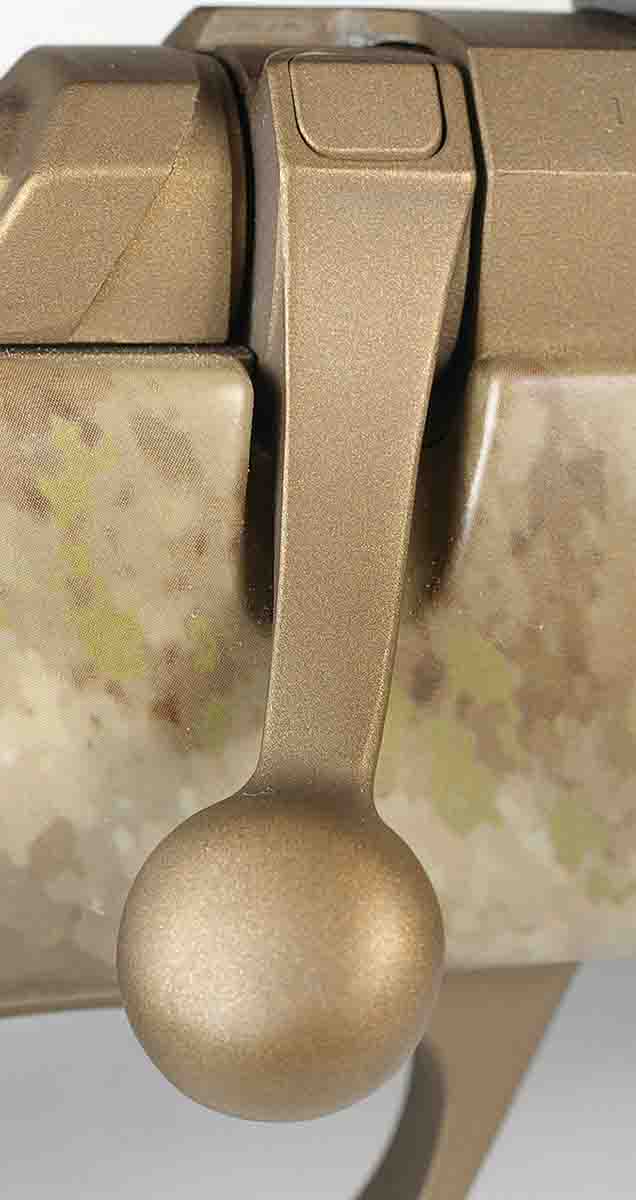
Muzzle blast was quite sharp with the brake in place, even when wearing earplugs and muffs. The brake reduced recoil, though, to about the level of a .243 Winchester. Without the brake, the rifle twisted noticeably on firing, but the rifle’s Inflex soft recoil pad helped lessen felt kick, and recoil was quite manageable – really no more than a .30-06. Bullet impact location remained the same with the muzzle brake on and off the barrel when shooting Nosler 150-grain Ballistic Tip bullets.
The Speed’s 26-inch barrel provided some impressive velocities from the 7mm Remington Magnum. Velocities 10 feet in front of the rifle’s muzzle for the four factory loads were 5 to 48 fps faster than stated on the ammunition boxes. Handloads were also a tad faster than velocities stated in most handloading manuals.
The X-Bolt action cycles slickly. A guide tab on the right side of the bolt body runs in a slot on the inside of the receiver to steady bolt travel. The flat top of the bolt, running in a corresponding channel inside the top of the receiver bridge, and the three locking lugs bearing on the raceways further enhance bolt glide. The rotary magazine positions a cartridge in line with the chamber, so feeding is very smooth.
A red tab protrudes behind the bolt shroud when the firing pin is cocked. Engaging the two-position safety, on top of the tang, blocks the sear and trigger lever and locks the bolt shut. A three-position safety was attempted for the X-Bolt, with a middle position that allowed opening the bolt with the safety still engaged. It proved difficult to quickly distinguish the exact position of the safety tab in the rush of firing at game and the safety was often pushed forward only into the middle position where the rifle would not fire. On the final version, pushing a bolt lock on the root of the bolt handle allows opening the bolt with the safety employed.
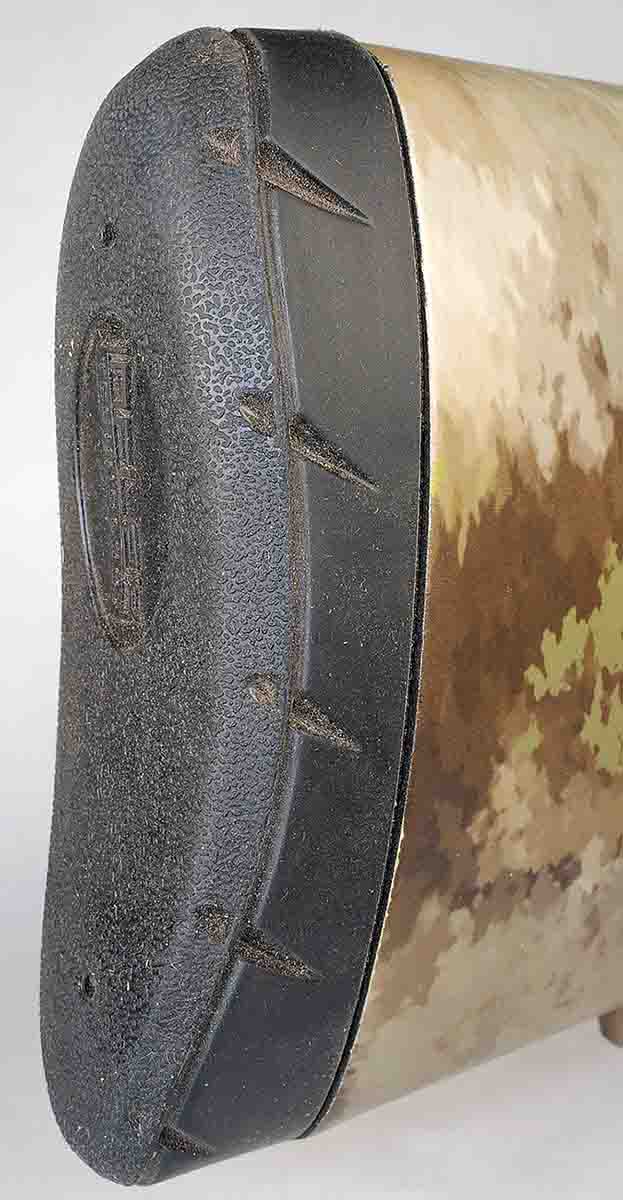
The round bottom receiver is mated to the stock with a receiver screw through the stock and into the receiver ring and a second screw into the receiver behind the magazine opening. A steel plate re-
coil lug, inserted between the barrel shank and front of the receiver, extends into a mortise in the stock. About .75 inch of the barrel in front of the receiver rests on a layer of bedding epoxy; the remainder of the barrel is free-floated. The recoil lug is held tightly in its stock cutout with bedding material, and the receiver ring and a section behind the magazine opening are also cradled by bedding material.
The trigger was set at just over 4 pounds as the rifle came from the box. To lighten the trigger, the action was removed from the stock to access the trigger pull adjustment screw located in front of the trigger. I peeled off the securing paint on the screw’s threads and turned out the screw. The lightest the trigger pull would adjust to was 3 pounds, 6 ounces.
All the metal, even the stock’s sling-swivel studs, is coated with a Burnt Bronze color CERAKOTE finish. The stock weighs a couple of candy bars less than 2 pounds. The Dura-Touch Armor Coating on the stock is smooth but with a slightly gummy texture. The grip and forearm have panels of stippled gripping surfaces that add even more of a sure hold. Temperatures rose into the 90s at midday when elk season opened, and I sweated like a horse, but the rifle remained tight in my clammy hands.
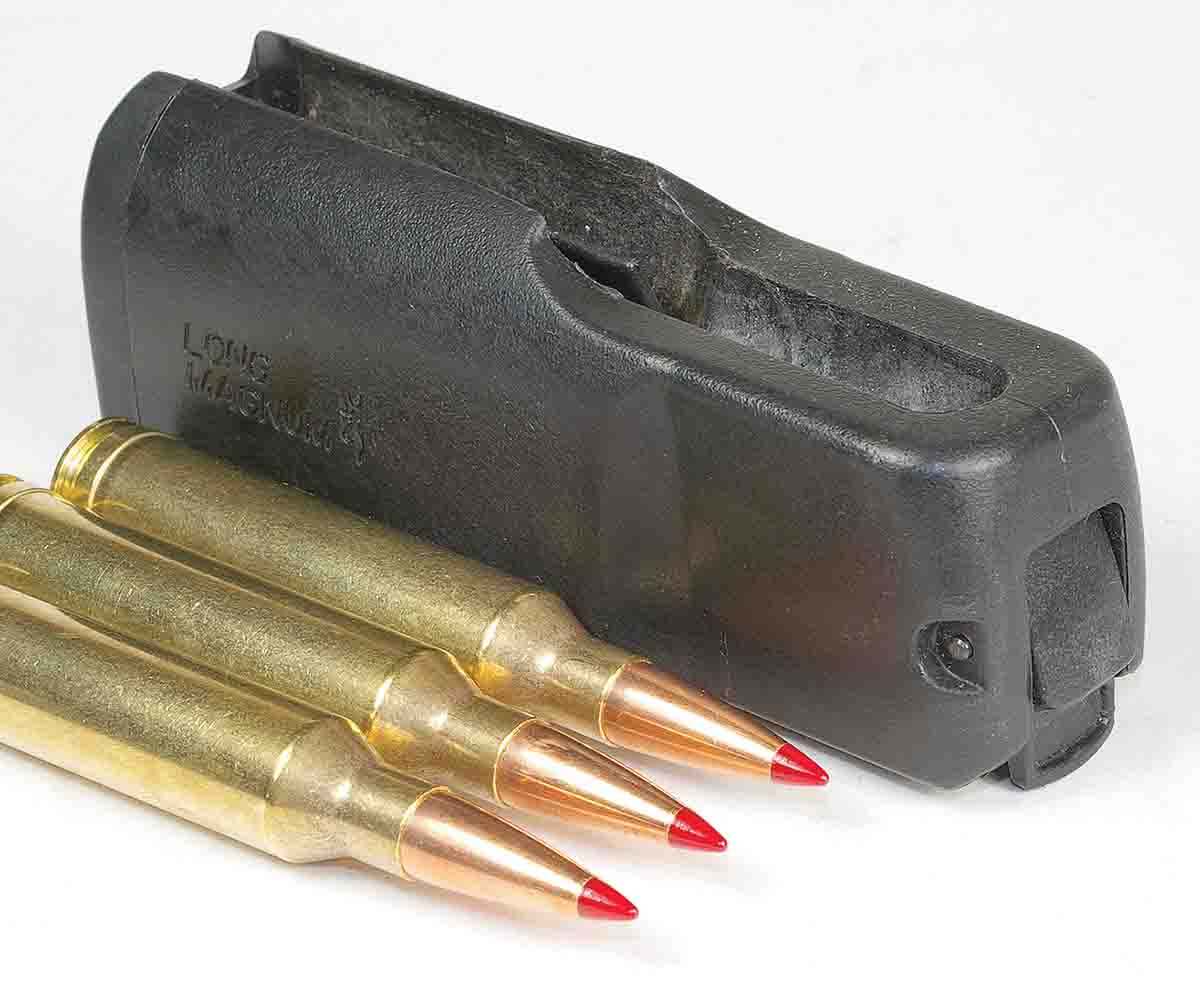
Camouflage stocks are the fashion in hunting rifles. The Speed’s stock is covered with A-TACS AU (Arid/Urban) camouflage, which matches nicely with the Burnt Bronze metal finish. When you’re over 50, however, you might lean your camouflage rifle up against a tree, walk off a ways and never find it when you return.
Because the magazine holds three magnum cartridges, that’s the number of rounds I fired for groups on targets at 100 yards. Hornady Precision Hunter and Federal Vital Shok factory loads shot groups a little under and a little over an inch at 100 yards. Federal Premium Vital Shok cartridges loaded with Nosler 150-grain Ballistic Tip bullets bettered the other factory loads by a smidgen. A few handloads shot as precisely as the factory loads, but there was not a great deal of difference.
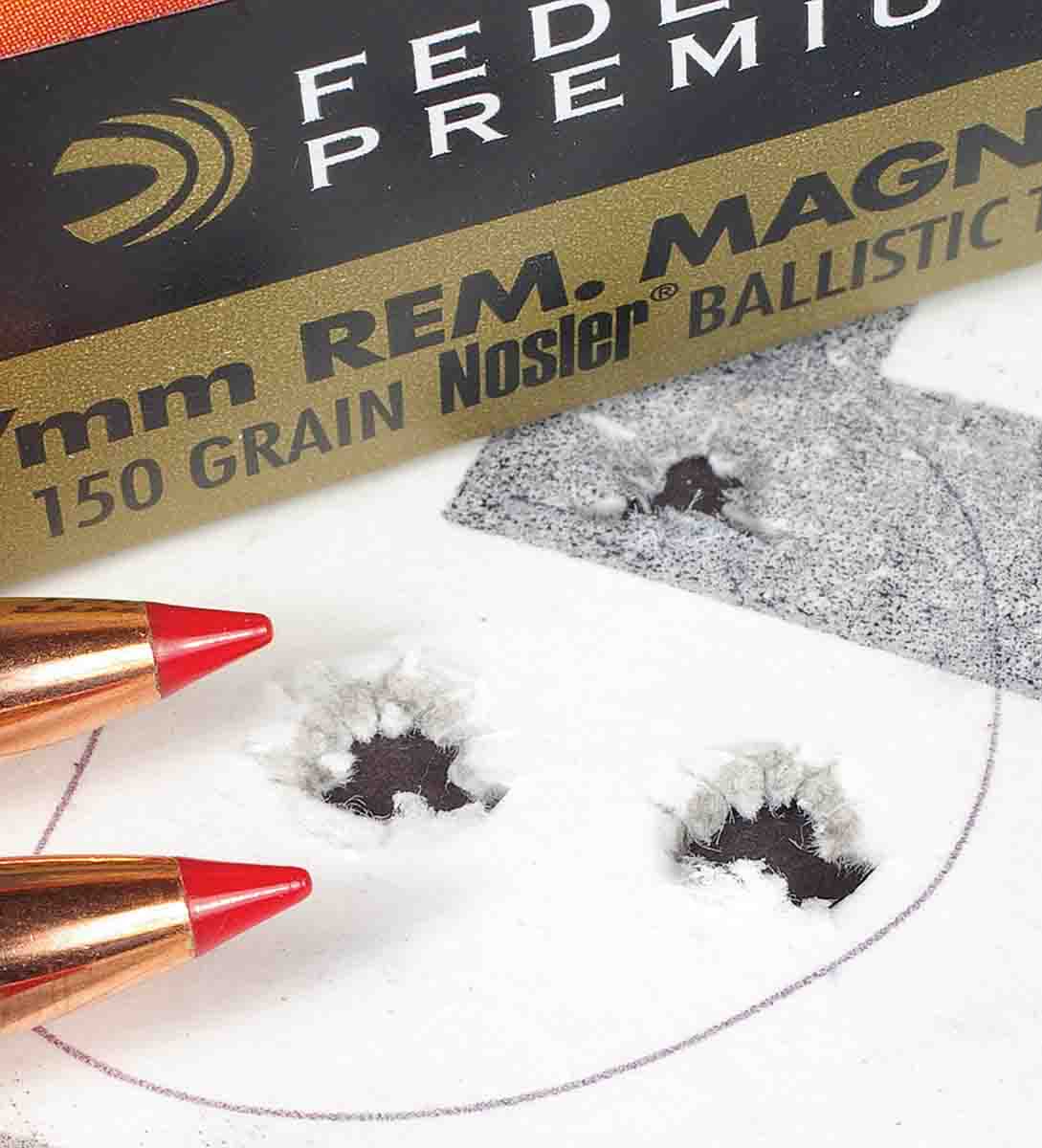
On opening day of elk season, the sun spiked the temperature to a blistering 93 degrees and humidity low enough to wither the green out of the grass. I hiked away from the road and within a couple of hours had drank most of my water. The Speed’s 26-inch barrel snagged every branch with the rifle’s sling on my shoulder as I walked along. Finally I took the hint, and when entering a thicket I carried the rifle in my hand. My sweaty hands, though, kept a tight grip on the rifle due to the Dura-Touch finish. Mosquitoes boiled up from a swamp, and I hosed myself with bug dope, sat on a rise and glassed the country, but the sun set without the hint of an elk.
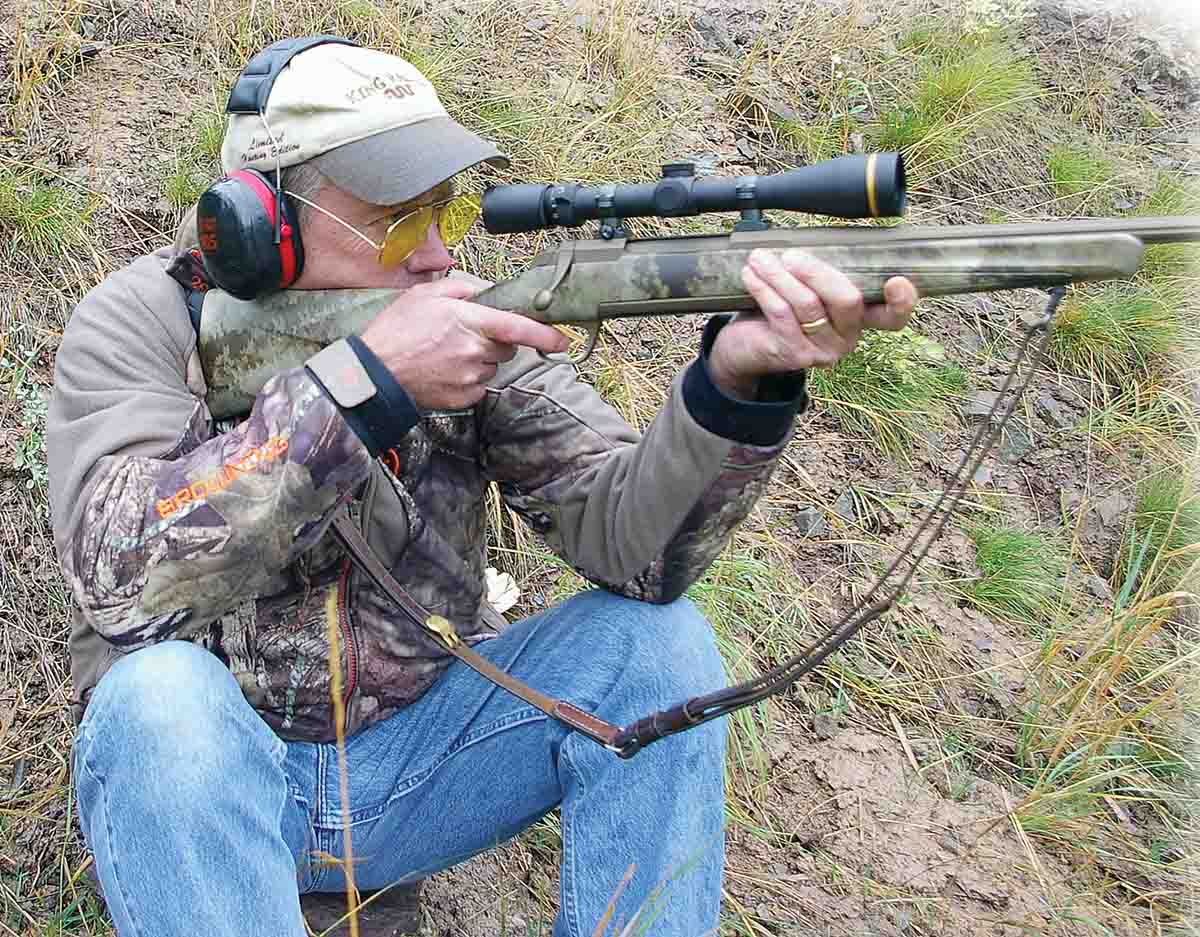
The next time out I hiked a few miles looking for elk and elk sign. The temperature peaked at 75 degrees in the early evening, and a wind evaporated my sweat. The rifle was easy to carry. The third day dawned cool and stayed pleasant the whole day. An hour before sundown, the wind carried the high note of a bull’s bugle, but I never saw anything.
On the hike out, the brown spots of elk were spotted far downstream along the riverbank. The last elk walked into the trees when I arrived in sure range, so I ran up a rise and peeked over the edge. A rutting bull circled a dozen cows and calves. Leaning my chest and the rifle into a tree trunk, a big cow was shot broadside at about 150 yards.
The elk ran and I hurried after them, finding the cow standing in the brush with its head hanging. The rifle came up as if on its own and fired, but the bullet never made it through the brush. The cow hobbled off and splashed into the river. I made it to the river bank just in time to see the elk fall over dead in the middle of the river. There are no pictures of the elk, rifle and me, because it wasn’t until midnight in a cold rain that I had dragged and pushed and floated the carcass down the river to where I could pull it out. Field dressing the elk showed the Hornady ELD-X bullet had hit just behind the diaphragm, shattered part of the liver and plowed out the far side.
The rain, river water and salt of sweat and blood were wiped off the X-Bolt rifle and Leupold scope with my shirt sleeve. The pair certainly withstood some tough use and weather – and stand ready for more elk hunting.
